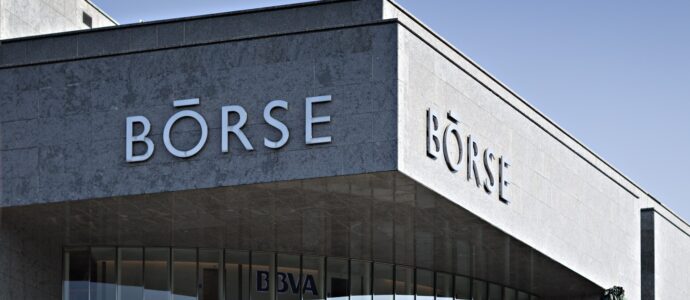Zurich, Switzerland
Currency : Swiss franc
Indices : SMI,SPI,SLI,SBI,SARON
Website : https://www.six-group.com/en/products- services/the-swiss-stock-exchange.html
people
Founded
1873
analytics
No. of listings
250
trending
Market cap
US$ 1.95 trillion

History
The first stock exchanges in Switzerland were established locally in major Swiss cities with the authorization of Cantonal authorities. Geneva took the lead in 1850, opening its trading floor in 1855 and gaining approval from the Grand Council of Geneva in 1856. The Basler Börse followed in either 1866 or 1876, depending on sources, in Basel, and another exchange was established in Zurich in 1873. The Berne exchange, still in operation today, was founded in 1884. Additionally, smaller exchanges were created in Lausanne in 1873, in St. Gallen in 1887, and in Neuchâtel in 1905. These exchanges were subject to value-added tax regulations imposed by the Cantons.
During the First World War, all Swiss exchanges were closed, except for bond trading on the Geneva exchange. The depression of 1920–21 was followed by a bull market in the 1920s. After the Second World War, banking fees for trades on exchanges were unified in a broker conference. In the mid-1950s, exchange revenues reached new highs, similar to the periods before or between the wars until 1929. After the Great Depression of the 1930s, a federal banking law was introduced. This positive development continued until the Kennedy Slide of 1962, triggered by measures against economic slowdown, the New York crash, and the Cuban Missile Crisis.
Following the deregulation and the end of the Bretton Woods System (fixed exchange rates) by the United States in the 1970s, a fundamental transformation of the economy and the financial landscape began, which continues to this day. Finance derivatives were introduced to address this need, and in 1973, the Chicago Board Options Exchange was established as an exchange exclusively handling derivatives. The oil crisis of 1974 led to the most significant post-war recession since 1931.
In 1999, the association was rebranded as SWX Swiss Exchange, and in 2002, it underwent a transformation into a public limited company named SWX Swiss Exchange AG. In July 2004, it declined a merger proposal from Deutsche Börse, which analysts anticipated would benefit many small companies listed on SWX Swiss Exchange. Since 2007, Deutsche Börse and SIX Swiss Exchange have jointly operated Scoach, a derivatives trading platform. The exchange was officially renamed SIX Swiss Exchange in 2008. As part of a larger restructuring in 2008, SWX Swiss Exchange merged with SIS Group and Telekurs Group to form SIX Group. Currently, SIX Swiss Exchange is wholly owned by SIX Group, an unlisted public limited company controlled by 122 banks or financial institutions.
